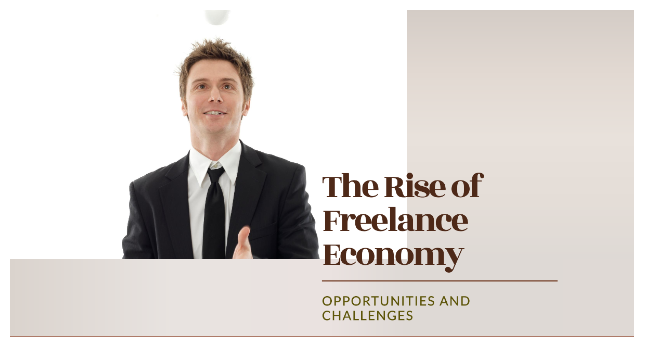Balancing Free Speech vs. Safe Spaces in the Digital World

In the digital age, the internet has transformed how people communicate, access information, and engage with one another. With these advancements, the tension between free speech and the creation of safe spaces has become a prominent issue. Free speech, a cornerstone of democratic societies, allows individuals to express their opinions without fear of censorship or retaliation. However, the unrestricted nature of online communication has also led to the proliferation of harmful content, misinformation, and harassment. This raises the question of how to balance the right to free speech with the need to create safe spaces in digital environments.
The Concept of Free Speech in the Digital Age
Free speech is a fundamental human right protected by international laws and treaties. It serves as a vital component of democracy, allowing individuals to express opinions, debate ideas, and hold governments accountable. In the digital age, platforms like social media, blogs, and forums have amplified the reach of free speech, giving a voice to those who might not have had one otherwise. The internet has become a global public square where diverse perspectives can be shared and debated.
However, the digital realm has also exposed the limitations and challenges of free speech. While the internet democratizes information, it also enables the spread of harmful content, including hate speech, cyberbullying, and misinformation. The question of whether free speech should have limits in digital spaces is complex and multifaceted. On one hand, there is the argument that imposing restrictions undermines the essence of free speech. On the other hand, unregulated speech can lead to harm and discrimination, infringing on the rights of others to live in a safe and secure environment.
The Rise of Safe Spaces Online
Safe spaces are environments where individuals can express themselves without fear of discrimination, harassment, or harm. They are designed to protect marginalized groups from the negative effects of harmful speech and behavior. In the digital world, safe spaces have gained importance as more people spend significant portions of their lives online. These spaces aim to create inclusive and supportive environments that foster open dialogue while protecting vulnerable individuals from harm.
The demand for safe spaces online has grown in response to the prevalence of cyberbullying, hate speech, and online harassment. Marginalized communities, including racial minorities, LGBTQ+ individuals, and women, often bear the brunt of these attacks. As a result, there is a growing call for online platforms to take proactive measures in creating safe spaces that protect users from harmful content.
Content Moderation: A Balancing Act
Content moderation and trust and safety tools are the process of monitoring and managing user-generated content on digital platforms. It plays a critical role in balancing free speech and safe spaces, as it involves making decisions about what content is permissible and what should be removed. Content moderation is not a one-size-fits-all solution; it requires a nuanced approach that considers the context and impact of the content in question.
One of the challenges of content moderation is defining what constitutes harmful content. While some types of speech, such as hate speech and threats of violence, are clearly harmful, other forms of speech may fall into gray areas. Determining whether content is offensive, misleading, or harmful can be subjective and context-dependent. This subjectivity makes it difficult for platforms to establish clear guidelines and policies that effectively balance free speech and safety.
Additionally, content moderation at scale presents significant challenges. With billions of users and an immense volume of content generated every day, digital platforms rely on automated systems and algorithms to flag and remove harmful content. However, these systems are not foolproof and can result in false positives or negatives, leading to the censorship of legitimate speech or the persistence of harmful content. Human moderators are often employed to review flagged content, but this approach is labor-intensive and can lead to inconsistent outcomes.
The Role of Technology and Algorithms
Technology plays a crucial role in shaping the balance between free speech and safe spaces. Algorithms are used to curate content, personalize user experiences, and detect harmful speech. While these technologies can enhance user engagement and protect users from harmful content, they can also have unintended consequences.
Algorithms are often designed to maximize user engagement, which can lead to the amplification of sensationalist or divisive content. This can contribute to the spread of misinformation and polarizing narratives, undermining the quality of discourse in digital spaces. Furthermore, algorithms may inadvertently reinforce biases, leading to the disproportionate targeting of certain groups or viewpoints.
To address these issues, digital platforms must invest in developing transparent and accountable algorithms. This includes ensuring that algorithms are designed to prioritize user safety and well-being, rather than solely focusing on engagement metrics. Additionally, platforms should provide users with more control over their online experiences, allowing them to customize content preferences and moderation settings.
Legal and Ethical Considerations
The tension between free speech and safe spaces raises important legal and ethical considerations. Governments and regulatory bodies have a role to play in setting standards and guidelines for digital platforms. However, the regulation of online speech presents challenges related to jurisdiction, enforcement, and potential overreach.
Different countries have varying laws and cultural norms regarding free speech and content regulation. What may be considered acceptable speech in one jurisdiction may be deemed offensive or harmful in another. This creates complexities for global platforms that must navigate conflicting legal frameworks and user expectations.
Ethically, platforms must balance the rights of individuals to express themselves with the responsibility to protect users from harm. This requires a commitment to transparency, accountability, and fairness in online content moderation practices. Platforms should engage with diverse stakeholders, including civil society organizations, advocacy groups, and users, to develop policies that reflect a broad range of perspectives and values.
The Way Forward: Collaborative Solutions
Finding the right balance between free speech and safe spaces in the digital world requires collaborative solutions that involve multiple stakeholders. Governments, digital platforms, civil society organizations, and users all have roles to play in creating a more equitable and safe online environment.
Governments should work with digital platforms to establish clear and consistent regulations that protect users from harm while respecting free speech rights. This includes developing standards for content moderation, transparency reporting, and user redress mechanisms. Additionally, governments should promote digital literacy and education to empower users to navigate online spaces responsibly and critically.
Digital platforms must take proactive measures to protect users from harmful content while respecting free speech rights. This includes investing in robust content moderation systems, developing transparent algorithms, and providing users with more control over their online experiences. Platforms should also engage in regular dialogue with users and stakeholders to ensure that policies and practices reflect diverse perspectives and evolving societal norms.
Civil society organizations and advocacy groups play a crucial role in holding platforms and governments accountable for their actions. They can advocate for the rights of marginalized communities, provide support to individuals affected by online harm, and contribute to the development of ethical and equitable digital policies.
Conclusion
Balancing free speech and safe spaces in the digital world is a complex and evolving challenge. As digital communication continues to shape our lives, it is essential to protect the right to free speech while ensuring that online environments are safe and inclusive. Achieving this balance requires collaboration, transparency, and accountability from all stakeholders involved. By working together, we can create a digital world where diverse voices are heard, and all individuals can engage in meaningful and respectful discourse.



